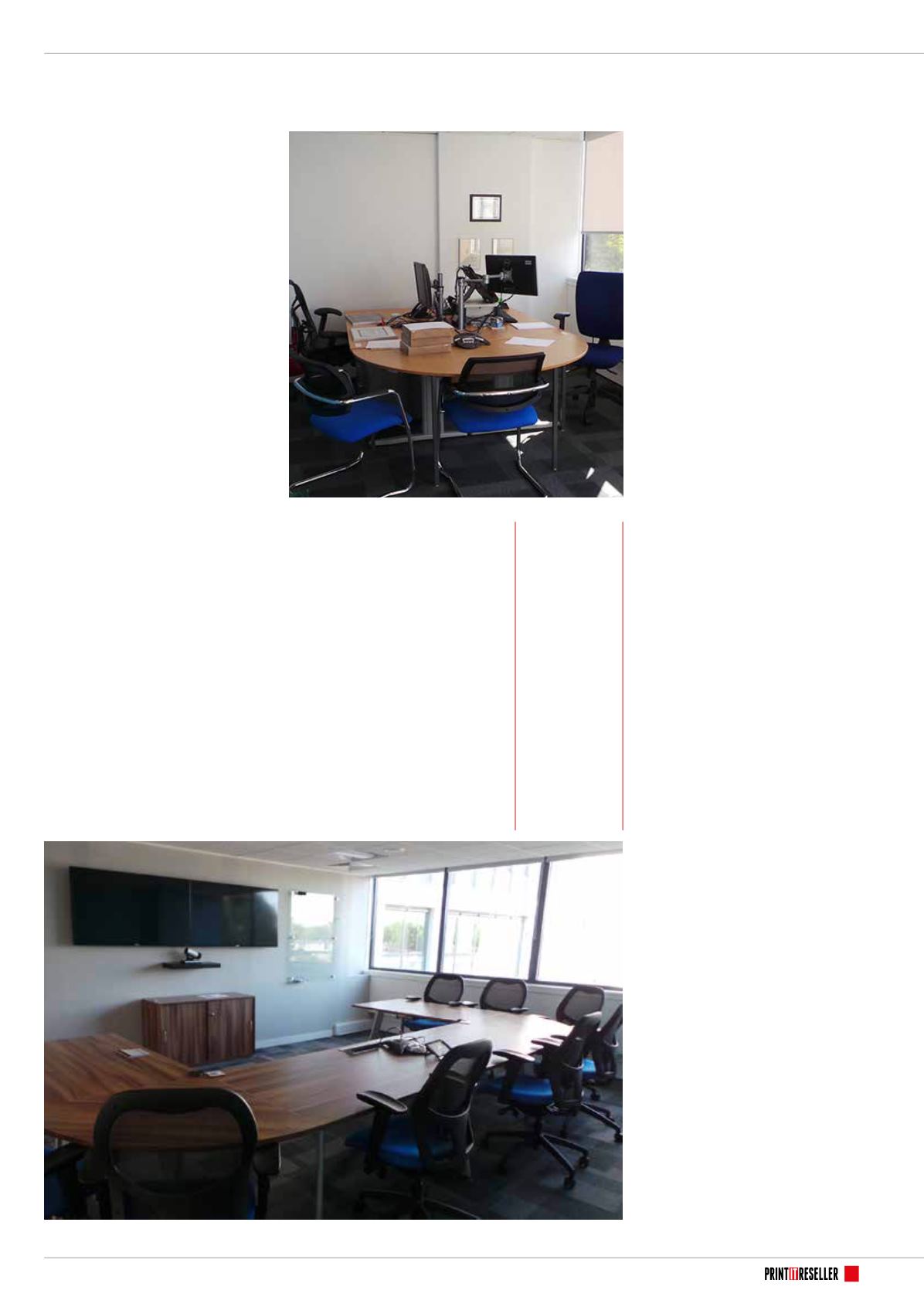
PRINT
IT
RESELLER.UK
DIGITISATION
37
have a corporate real estate reduction
programme,” he said.
The Bank of New York Mellon, for
example, was able to reduce its real estate
requirement in Central London by 32% by
removing two thirds of its on-site filing.
Another NewField IT client, a financial
services company, almost halved its
London office real estate by making similar
reductions to on-site filing.
The key to achieving and maintaining
such savings is implementing an IT
infrastructure optimised for what NewField
IT calls the Future of Work.
This concept envisages a world in which
bricks and mortar are used for specialist
facilities and better collaboration space
rather than for storing paper; where
employees have access to the information
they need wherever they are; where there
is a process framework so people can work
in compliance with corporate policies on
security etc. regardless of their location
or the device used; and in which there is
a move away from capital investment to
‘something as a service’ – buildings as
a service, IT infrastructure as a service,
software as a service.
Future of Work
Future of Work principles can be seen in
practice in NewField IT's new offices in
Twickenham, London. As the company is still
growing, it has moved to larger premises,
but Duckenfield asserts that Future of Work
drivers – particularly around the use of
space – are equally valid for companies in
the process of downsizing.
“These principles have helped us
maximise our use of real estate with
tangible savings and helped us reduce
our printing by 34%, and we weren’t big
printers in the first place,” he said. “We
have also massively improved our working
efficiency because we have enabled
collaboration through the design of the
office.”
The Future of Work concept is built on
three foundations:
1. Fully integrated IT systems.
The better the IT infrastructure, the better a
company’s use of information and the less
need there is to print. The key ingredient
here is interoperability: if a business is to
streamline processes and make use of its
data, all systems have to talk to each other.
One of the impressive features of the
NewField IT offices are the large format
displays that provide each team with
insights into relevant data.
“In the Future of Work, predictive and
prescriptive insights will be commonplace,
not just the preserve of a data analyst
doing a monthly report. Each team has a
live analytics screen that’s updated with
regular cadences, as often as every 15
minutes, so they can see exactly how they
are performing during their working day,”
explained Duckenfield.
2. Good paper/Bad paper
The Future of Work will not be paperless –
paper is still good at certain things – but
when and how paper is used will change
significantly.
According to Duckenfield, there are
four reasons why people print – to read, to
annotate/sign, to save and to share – but
as technology develops what is perceived as
an acceptable use of paper will change.
“There will be good paper and bad
paper,” he said. “Good uses include
reading – there will be circumstances
where reading on paper is still better than
reading on a computer, but technology
will catch up; annotation – until electronic
annotation tools catch up with the speed
and convenience of paper, then paper will
still be a good way of doing it and there
will be circumstances when paper forms are
better than a tablet especially in developing
markets; and sharing information – you will
not be able to hand out a free newspaper
electronically or a leaflet advertising a
restaurant.
“However, some reasons will become
less good, for example signing. Most
Western territories now accept electronic
signatures and there’s no need for it within
a company – it just slows things down.
Sharing information should be done much
more effectively and saving information on
paper is definitely bad. At NewField IT we
have moved entirely away from printing
and filing because if information is on
paper it can only exist where the paper is.
We have got rid of our filing cabinets and
we have also got rid of our off-site archive.
Everything is electronic, it’s all backed up in
multiple locations.”
3. Zoned office space
The third element is the more efficient use
of office space through zoning. NewField
IT breaks the office down into four distinct
zones:
Specialist space.
Every business has
certain facilities that can only be located in
an office, such as a print room, mail room,
clean room or, in the case of NewField IT,
Continued...
All paper must be
cleared from desks
by the end of the
day
NewField IT’s
conference room
with telepresence
system for global
collaboration


